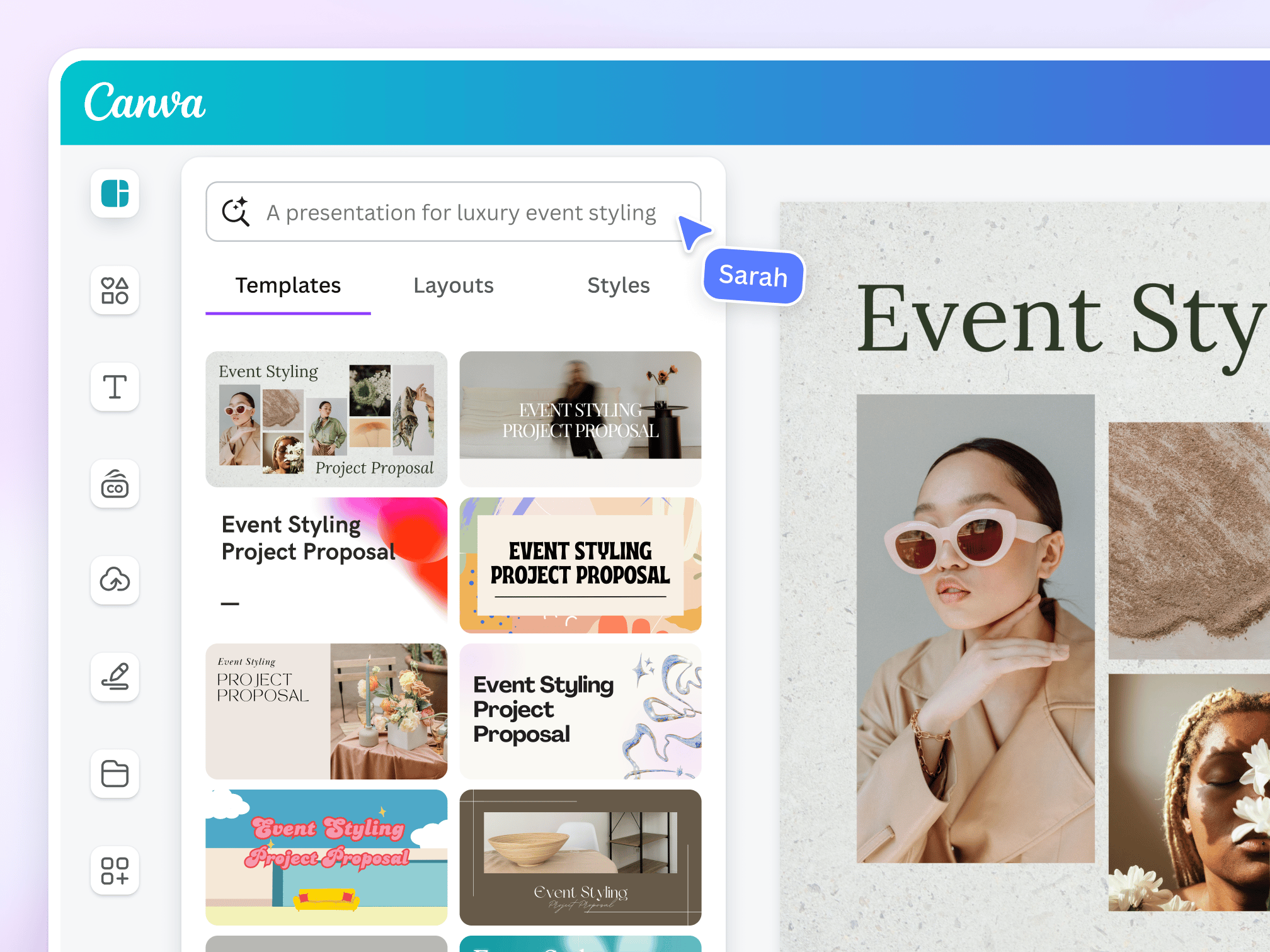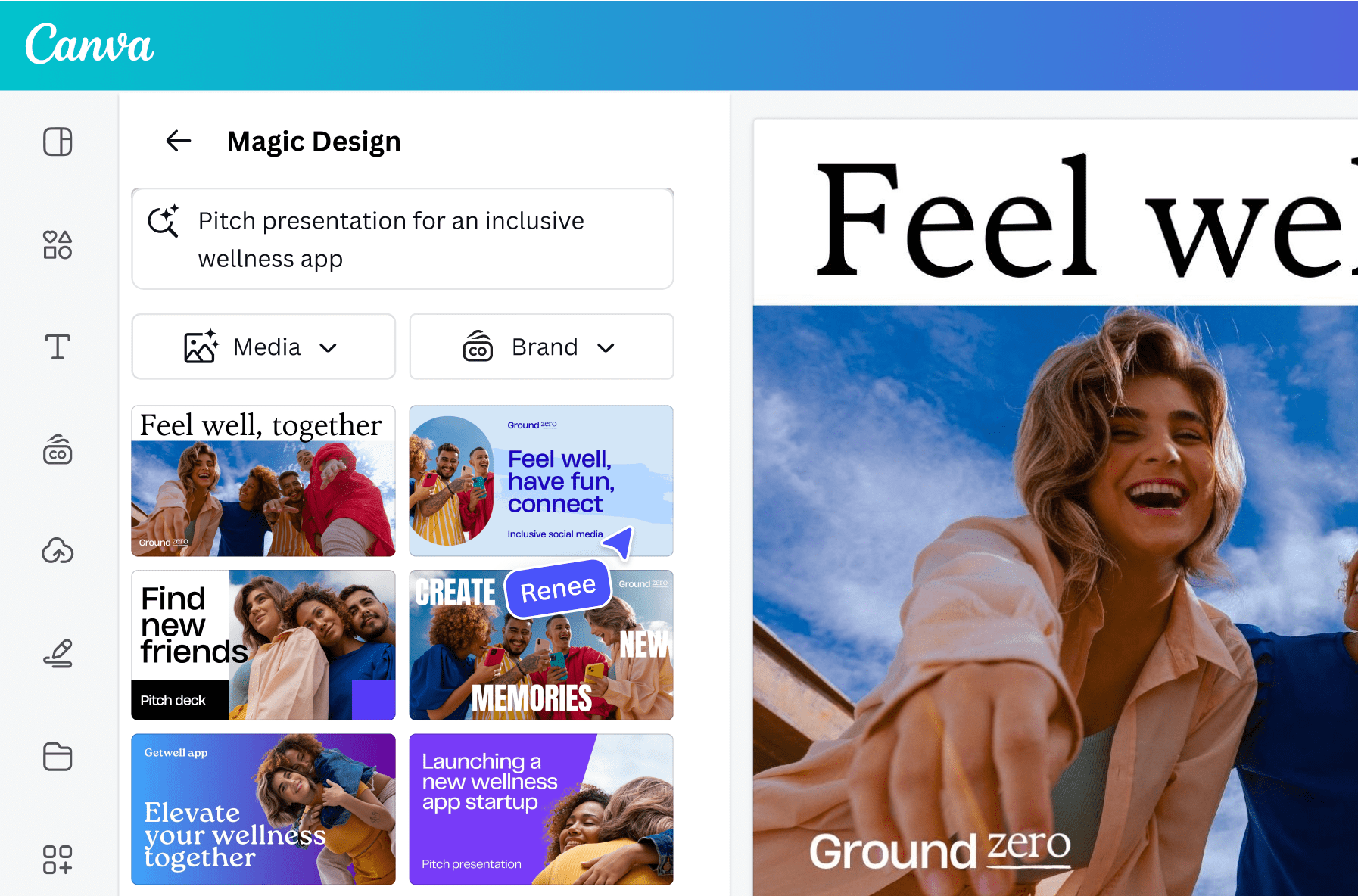
Canva Magic Design/AI Assistant: Complete Buyer's Guide
Democratizing design creation for non-professional users
Canva Magic Design/AI Assistant represents a mainstream entry into AI-powered design automation, positioning itself as the accessible solution for organizations seeking to accelerate routine design workflows without replacing professional design expertise.
Market Position & Maturity
Market Standing
Magic Design competes in the accessible AI design segment rather than professional design software market, excelling in high-volume, template-based scenarios where speed and accessibility outweigh design sophistication requirements [1][6].
Company Maturity
Canva Magic Design/AI Assistant operates from a position of established market strength within the broader Canva ecosystem, which has achieved significant market penetration in the accessible design software segment.
Growth Trajectory
The broader market context of emerging AI design tools experiencing rapid adoption provides favorable conditions for continued growth, though specific performance metrics require direct vendor verification.
Industry Recognition
Industry recognition appears through strong user satisfaction metrics on established review platforms, with G2's 4.7/5 rating indicating positive market reception [7].
Strategic Partnerships
Strategic partnerships include integration capabilities with ChatGPT and operation within Canva's broader platform ecosystem, providing network effects and reduced switching costs for existing Canva users [4].
Longevity Assessment
The platform benefits from Canva's proven business model and operational infrastructure, providing stability indicators that support long-term viability assessments.
Proof of Capabilities
Customer Evidence
G2 reviews provide verified user testimonials showing positive experiences with AI functionality, particularly for template-based design acceleration and ease of use benefits [7].
Quantified Outcomes
Quantified performance evidence includes reported time savings ranging from 50% to 93% depending on implementation approach and use case complexity [6].
Case Study Analysis
Implementation success patterns emerge from available user feedback, with strongest positive outcomes in high-volume, template-based scenarios where speed and accessibility outweigh design sophistication requirements [1][6].
Market Validation
Market validation appears through adoption within the marketing agency segment, which leads AI infographic tool adoption at 68% according to industry analysis [Domain Research Context].
Competitive Wins
Competitive performance evidence shows Magic Design maintaining strong user satisfaction on G2 (4.7/5) while facing challenges in professional design contexts where users consistently report limitations compared to specialized tools like Adobe [7].
AI Technology
Canva Magic Design/AI Assistant leverages text-to-image generation algorithms and template automation to transform textual descriptions and media inputs into visual content, enabling users to produce designs without extensive design expertise [6].
Architecture
The platform's technical architecture operates within Canva's established cloud infrastructure, providing scalability for high-volume template creation while maintaining integration capabilities with external tools like ChatGPT for enhanced infographic creation workflows [4].
Primary Competitors
Primary competitors include professional design software like Adobe Creative Suite for sophisticated design requirements, and emerging AI design tools competing in the accessible automation segment.
Competitive Advantages
Competitive advantages include verified AI functionality in a market where 55% of competitors lack genuine machine learning capabilities [Domain Research Context], strong user satisfaction on G2 (4.7/5) [7], and seamless integration within Canva's established ecosystem [4].
Market Positioning
Market positioning reveals Magic Design competing in the accessible AI design segment rather than professional design software market.
Win/Loss Scenarios
Win scenarios favor Magic Design when organizations prioritize accessibility for non-professional users over design sophistication, template-based workflows, and integration benefits within existing Canva platform usage. Loss scenarios occur when organizations require sophisticated aesthetic judgment and professional design capabilities [7].
Key Features

Pros & Cons
Use Cases
Integrations
Featured In Articles
Comprehensive analysis of AI Infographic Creators for AI Design for AI Design professionals. Expert evaluation of features, pricing, and implementation.
How We Researched This Guide
About This Guide: This comprehensive analysis is based on extensive competitive intelligence and real-world implementation data from leading AI vendors. StayModern updates this guide quarterly to reflect market developments and vendor performance changes.
19+ verified sources per analysis including official documentation, customer reviews, analyst reports, and industry publications.
- • Vendor documentation & whitepapers
- • Customer testimonials & case studies
- • Third-party analyst assessments
- • Industry benchmarking reports
Standardized assessment framework across 8 key dimensions for objective comparison.
- • Technology capabilities & architecture
- • Market position & customer evidence
- • Implementation experience & support
- • Pricing value & competitive position
Research is refreshed every 90 days to capture market changes and new vendor capabilities.
- • New product releases & features
- • Market positioning changes
- • Customer feedback integration
- • Competitive landscape shifts
Every claim is source-linked with direct citations to original materials for verification.
- • Clickable citation links
- • Original source attribution
- • Date stamps for currency
- • Quality score validation
Analysis follows systematic research protocols with consistent evaluation frameworks.
- • Standardized assessment criteria
- • Multi-source verification process
- • Consistent evaluation methodology
- • Quality assurance protocols
Buyer-focused analysis with transparent methodology and factual accuracy commitment.
- • Objective comparative analysis
- • Transparent research methodology
- • Factual accuracy commitment
- • Continuous quality improvement
Quality Commitment: If you find any inaccuracies in our analysis on this page, please contact us at research@staymodern.ai. We're committed to maintaining the highest standards of research integrity and will investigate and correct any issues promptly.